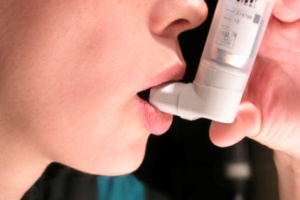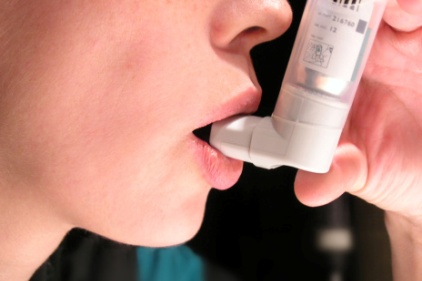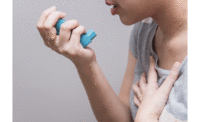 Source: American Lung Association
Source: American Lung Association
Unlike at home, you may have less control at work over your exposure to certain irritants and allergens that can be harmful if inhaled and can cause asthma symptoms (coughing, wheezing, and shortness of breath).
Here are four steps to prevent asthma symptoms at work.
Step 4: Take care of your asthma
Avoid exposure to allergens or irritants that cause asthma symptoms.
The best way to prevent asthma at work is to minimize the sources of indoor and outdoor air pollution. Identifying the sources, removing the sources, making sure the ventilation system is working properly and the airflow is not blocked are key steps to solving indoor air problems.
One of the most important steps you can take to prevent asthma symptoms is to identify what you are being exposed to at home and at work that may be causing your asthma to flare-up. Some exposures in the work environment have been associated with causing asthma symptoms.1 You may think of an industrial workplace or “dirty job” as a place where you may be exposed to things that could make your asthma worse. But, exposures to allergens and irritants in an indoor office spaces are equally as important to consider when you have asthma. Office buildings can be a threat to lung health if not properly maintained.
- Identify your asthma triggers at work. Learn ways to limit your exposure to things that make your asthma worse or avoid them all together.
- Eliminate sources of unhealthy air. Find out how building owners, managers and employees can work together to improve indoor air quality where you work.
- Use safer cleaning products whenever possible.
Start with soap and water, or vinegar and water. Those traditional cleaning products work well. However, if you find that you need a more powerful cleaning product for the job, such as a disinfectant to kill microorganisms that cause infection, many cleaning chemicals now have product alternatives that are more environmentally friendly. A good place to start is on the U.S. Environmental Protection Agency, Design for the Environment website. This program helps consumers, businesses, and institutional buyers identify cleaning and other products that perform well, are cost-effective and are safer for the environment. However, being safer for the environment does not always translate to being safe for your health. Be sure to review Material Safety Data Sheets on cleaning chemicals to choose safer products.
A list of cleaners that meet EPA standards can be found at: www.epa.gov/dfe/. Other independent programs certify products as well, such as Green Seal and Eco Logo. The American Lung Association does not certify cleaning products.
- Use safer chemicals and machinery.
Within some industries, there is the possibility to replace harmful products with safer ones. Talk to your employer to see what is available.
Similarly, there are often other machines that release fewer dusts, mists or other air pollutants. By encouraging your employer to switch the materials and equipment used in your workplace, you can greatly improve the air quality in your workplace and its effect on your health./
- Use respiratory protective gear to avoid exposure to workplace hazards.
Some work requires that you be in settings where the air is hazardous, such as emergency response work. You may have been told by your employer that you need to wear a respirator to perform some of your workplace tasks. Be sure to follow that instruction. Your lungs need the protection.
OSHA has guidance on necessary respiratory equipment to protect your lungs available on OSHA's Respiratory Protection page.
The National Institute for Occupational Safety and Health (NIOSH), National Personal Protective Technology Laboratory has a list of designated approved respiratory protective gear, NIOSH-Approved Respirators: What they are? How can they be identified? Where can I get them?
- Avoid tobacco smoke.
Secondhand smoke can cause asthma symptoms. Encourage your employer to establish a tobacco-free policy. And, if you smoke, the best way to protect your lungs is to make a plan to quit. The American Lung Association can help.
Asthma triggers found in the workplace include:
- mold
- airborne dusts
- gases, fumes, and vapors
- secondhand smoke
- cleaning chemicals and scented personal care products
- pests (dust mites, cockroaches, mice)
- stress
- Outdoor workers who have asthma also face risks of breathing problems from exposures to outdoor air pollution, especially for jobs on the road and near roadways.
- Common triggers for outdoor workers include:
- Outdoor air (ozone, particle pollution, nitrogen oxides, sulfur dioxides)
- Diesel
- Vehicle exhaust
NEXT: Getting help, reporting symptoms and taking care of your asthma.
[1]: National Institute for Occupational Safety and Health (NIOSH). Work-related lung disease surveillance report 2002. DHHS (NIOSH) Publication No. 2003-111, 2003, p191. [link]



